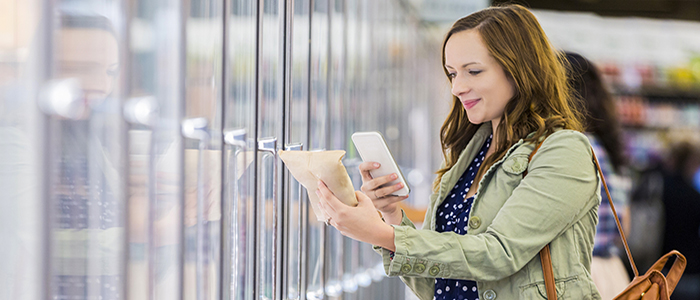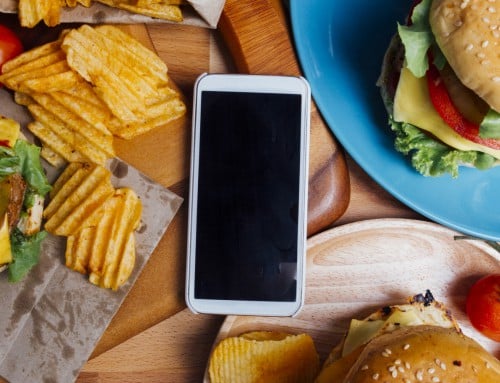People will always need food. So being in the grocery store industry is a fairly reliable field, but there are risks. A convenient store location and top-notch food items may not be enough to succeed anymore.
As the world becomes increasingly digital, grocery stores have to change with the times, too. Here, we’ve outlined a few digital trends in the grocery store field to help you stay ahead of the curve.
Taking to the Internet
Virtually everything is available online nowadays. According to estimates from Forrester Research, Canadians are expected to spend $39 billion a year online by 2019, accounting for 9.5 per cent of all retail purchases. So stores selling groceries have had no choice but to jump on the bandwagon.
Canadians are expected to spend $39 billion a year online by 2019, accounting for 9.5 per cent of all retail purchases.
Now, some grocery store chains let consumers pick out their food items from the comfort of their home. Loblaws has a “click and collect” program in which customers order their groceries online and pick them up in person. Longo’s has an online delivery service called Grocery Gateway in the Toronto area, and Metro, which operates in Ontario and Quebec, has bought a meal kit delivery service called MissFresh.
Walmart has been expanding its online presence, too. The retailer earmarked $11 billion in capital expenditures in 2017, a large portion of which was set to go towards boosting digital initiatives. Also, with Amazon’s recent purchase of Whole Foods, some experts believe there will be more innovation to come in the online grocery business sector.
And there’s plenty of room for improvement. Since Canadians have been slow to warm to online grocery shopping, not all Canadian grocery stores have branched out into the online grocery sector.
While Americans buy 3 per cent of their food online and 4 per cent of UK food purchases are online, less than 1 per cent of total food purchasing by Canadians happens online, according to a January 2016 report from BMO Capital Markets analyst Peter Sklar. But Sylvain Charlebois, dean of the faculty of management at Dalhousie University in Halifax, said he anticipates Canadians will purchase about 10 per cent of their food online within the next 10 or 15 years.
Making use of social media
While some might just use Facebook, Twitter, and Instagram to upload pictures from their latest vacation, social media platforms also present an opportunity for businesses like grocery stores. Having a social media presence is becoming increasingly important, and it’s a great way to reach consumers.
Some chains are already making use of these platforms, and doing it well. According to Socialbakers Analytics Facebook monitoring tool, Walmart has the most Facebook fans of any brand in the US. Amazon and Target also made the list of the top ten companies with the most Facebook fans. But Canadian grocery retailers don’t seem to have caught up to the US companies — no grocery retailers in Canada made the top ten list for number of Facebook fans.
Almost 50 per cent of Canadian business owners use social media to promote their brand, according to ad agency Sherpa Marketing, but many struggle to transform those likes and followers into tangible business results. In order to use social media to its full potential, one needs to consider creating engaging content, reducing the emphasis on selling products, and tracking analytics in order to target the strategies and platforms that are working best.
Numerous checkout options
The ways in which someone can check out and pay for their groceries have diversified. We’ve all made use of self-checkout stations at our local grocery stores, so that we don’t have to face the judgmental stare of the cashier as we buy yet another roll of cookie dough. Payment with mobile devices is also becoming an increasingly common option.
But now, some grocery chains are testing out other checkout methods to help streamline the checkout process. Walmart recently renovated one of its stores in Ancaster, Ontario to make it a testing ground for new technology. Shoppers can grab a mobile scanning gun as they enter the store, which they can use to scan each of their purchases as they move through the aisles. This way, their bill will already be calculated by the time they reach the checkout.
One Walmart store in Ancaster, Ontario is testing out new digital products, like mobile scanning guns that customers can use to scan items as they shop.
And they’re not alone in their attempts to modernize brick-and-mortar shopping. Amazon is becoming an increasingly important player in the Canadian grocery market, and the opening of its first pilot project store, Amazon Go, in Seattle may signal a change in Canadian grocery shopping too. The pilot store allows consumers to wave their smartphone over a reader as they enter the store, pick out their items, and simply leave without lining up at a cashier when they’re done. The company then bills their Amazon account for whatever items they’ve taken with them.
As the checkout process is streamlined, some checkout lanes could be replaced with merchandise, increasing a store’s selling space. The transition away from money will also save grocers money, since processing dollar bills and coins is expensive.
More product information
In this digital age where the answer to any question you might have is just one Google search away, it’s not surprising that people increasingly want to know more about what they’re eating. Research from the Canadian Centre for Food Integrity (CCFI) found that many consumers don’t know a lot about their food or where it comes from, but they’re eager to learn.
SmartLabel allows for more transparency. Customers can scan barcodes on items in the store, which takes them to a landing page of information about ingredients, allergens, and other attributes. SmartLabel has partnered with brands including Cadbury, Kit Kat, Orville Redenbacker’s, Hellmann’s, Lipton, and more. Nearly 30,000 grocery products will have SmartLabel by the end of 2017.
Embrace new technologies
Grocery stores aren’t the only food industry taking advantage of the digital age. Restaurants have also gotten inventive about how they can incorporate new technology into their businesses. Working to incorporate some of these digital trends for grocery stores into your business could help you reach a larger audience and make consumers experiences more convenient.
This blog is provided for information only and is not a substitute for professional advice. We make no representations or warranties regarding the accuracy or completeness of the information and will not be responsible for any loss arising out of reliance on the information.







